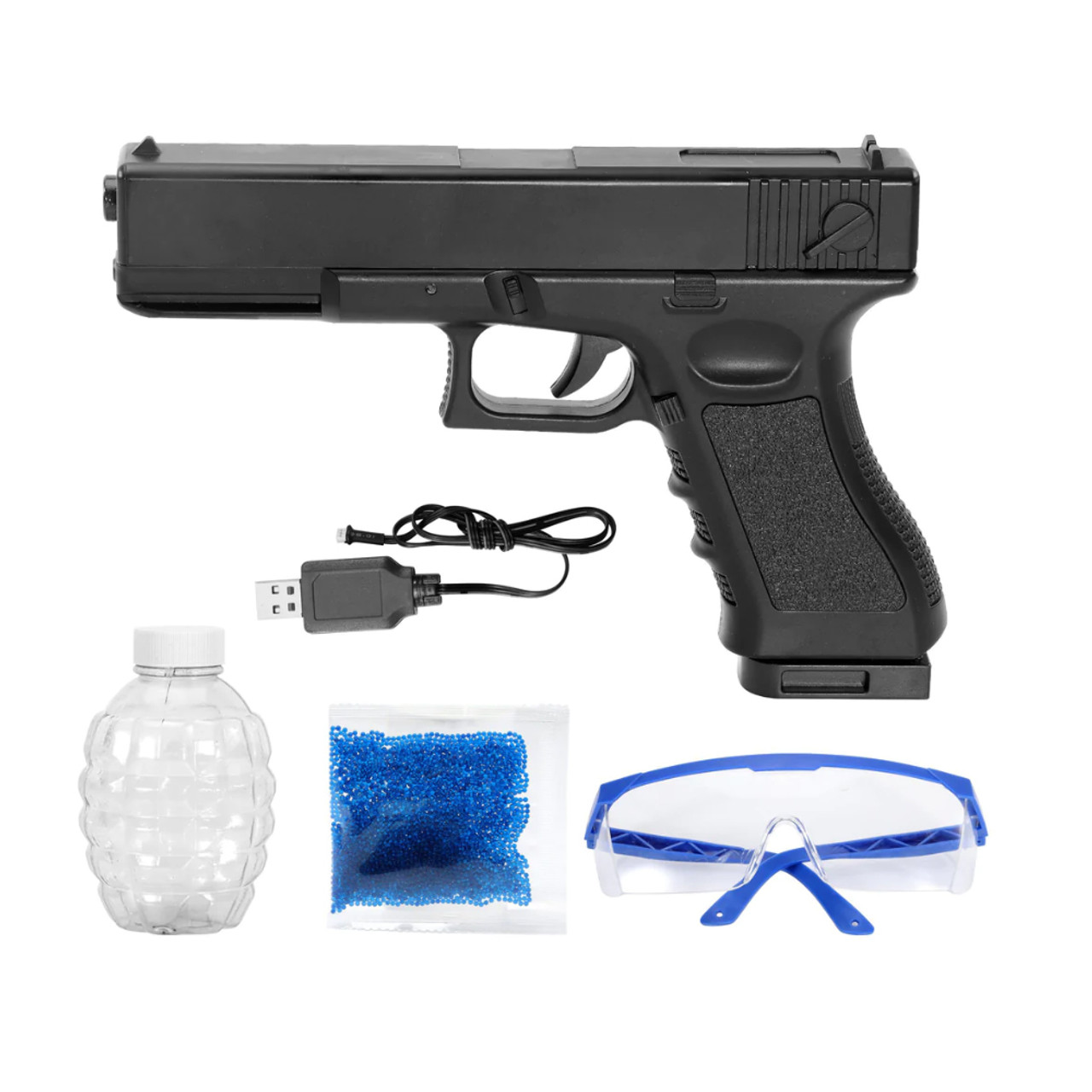
What is the best Gel Blaster gun?
This is a question we get asked regularly so we thought we might try and make it easier for you to decide. Below is a Gel Blaster Gun comparison table we have started, over time we will be filling in more details and adding more models. We have even highlighted a couple of our favourites in green.
| Picture | Name | Type | Approx Speed (feet per second) | Modes | Power | Body |
|---|---|---|---|---|---|---|
 |
JinMing M4A1 (Gen8) Gel Blaster | Rifle | 250~ | Auto & Single Shot | Battery | Nylon Composite |
 |
SKD M1011 Gel Blaster | Pistol | 150~ | Auto | Hopper Fed | Nylon Composite |
 |
JinMing ACR J10 | Rifle | 275~ | Auto | Battery | Nylon Composite |
 |
Laserhawk Dual Storm | Pistol | 150~ | Auto & Single Shot | Battery | Plastic |
 |
Jinming SCAR V2 Gel Blaster | Rifle | 275~ | Auto | Battery | Nylon Composite |
 |
Glock 22 | Pistol | 150~ | Single Shot | Gas | Polymer & Aluminium |
 |
SKD Glock 18 | Pistol | 150~ | Single Shot | Gas | Polymer & Aluminium |
 |
TSOL Fire Elite SY 887 SMG | Submachine Gun | 150~ | Auto | Battery | Plastic |
 |
M4A1 Sand | Rifle | 250~ | Auto & Single Shot | Battery | Nylon Composite |
 |
MP7 SMG Gel Blaster | Submachine Gun | 175~ | Auto | Battery | Nylon Composite |
 |
Laserhawk Orange Pistol | Pistol | 150~ | Single Shot | Manual | Plastic |
 |
Jinming LDT Mp5 | Submachine Gun | 175~ | Auto | Battery | Plastic |
 |
Benelli Pump Action Shotgun | Shotgun | 150~ | Single Shot | Manual | Nylon Composite |
 |
LeHui Kriss Vector 2 | Submachine Gun | 175~ | Auto | Battery | Nylon Composite |
 |
Golden Eagle G99 | Pistol | 150~ | Single Shot | Battery | Metal |
So you're looking at Spotlight + Thermal setups?
You've come to the right place because we're going to explain it all and break down the most common setups, the most common spotlight sizes and the top thermal brands.
We all know why this combo is so effective, don't we? Spot wildlife from a distance, shine a light on them, and shoot. Not rocket science but it's a bit different to daytime shooting!
What Are Thermal Optics?
Thermal optics detect heat signatures — not light — meaning they work in total darkness, through fog, smoke, and even light brush. Anything with a temperature difference becomes visible, from animals to equipment.
Key Benefits:
Detect heat at long distances
Spot movement instantly
No need for ambient light
What Do Spotlights Do?
Spotlights provide intense illumination, allowing you to clearly identify what your thermal picked up. Once you detect something with thermal, the spotlight helps you investigate or act with precision.
Key Benefits:
Bright, focused light over long range
Rechargeable, durable builds
Perfect for search, tracking, and deterrence


Why Combine Them?
On their own, each tool is powerful — but together, they’re unbeatable.
Thermal finds.
Spotlight confirms.
Whether you're a hunter spotting a deer or a farmer locating a stray calf, this combo saves time, improves accuracy, and boosts safety.
Who Uses These Tools?
Hunters: Spot and identify game before they know you're there
Farmers: Check on animals, deter pests, or scan your property
Landowners: Boost nighttime security and monitor movement
10% Off When You Bundle
For a limited time, get 10% off your entire order when you buy any thermal optic with any spotlight.
Build your setup. See further. Move smarter.
Got questions? Reach out — we're here to help.
[ Get in Touch ] [ Shop Thermals ] [ Shop Spotlights ]

So what type of Thermal should you get?
For most people's budgets, you've really got two brands. Guide & Hikmicro. These are both quality manufacturers who are able to meet the needs of most farmers and amateur hunters. As always, these are 'you get what you paid for' situations where the lowest end of the market is of noticeably lower quality than the top end. For professional shooters, you can stay with the same brands, or move up to the Flir or Pulsar Series.
And what type of Spotlight should you get?
The most common spotlights that are used tend to be in that sweet spot of 9", however you also have the option of the 11" and 7".
Another point of difference is the use of QH (Quart Halogen) vs HID (High intensity discharge) lights.
Quartz halogen has the following qualities:
1. Warmer, yellower light quality
2. Instantaneous
3. Cheaper
4. Less light, less range
VS
HID:
1. Bright White Light
2. Short loading time for the light to reach its full potential
3. More expensive
4. Best quality light available, huge flood and range.

